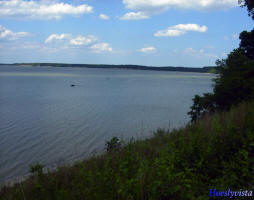 Moving to measurability: COP 9 finds “historic” agreement on indicators
Moving to measurability: COP 9 finds “historic” agreement on indicators
|
|
For the three decades that the international community has studied the processes of desertification, contention has been rife among scientists and politicians over the fundamentals of land degradation, including whether it is occurring, where and at what rate, its scope and its relationship to productivity. Now, the log-jam has finally started to shift.
When COP 8 in Madrid in 2007 approved the UNCCD's 10-year strategic plan and framework for the implementation of the Convention (2008-2018), it also tasked the Convention's Committee on Science and Technology (CST) to report at COP 9, two years down the line, on concrete ways to measure progress on the strategy's objectives to improve the wellbeing of humans and ecosystems, and to generate global benefits. That started an exhaustive process of research and regional consultations leading to the submission to COP 9 in Buenos Aires last September of 11 impact indicators (see box below) that outgoing CST Chair William Dar called "an historic event in the 15-year history of the UNCCD".
Prof. Klaus Kellner, a South African national, was elected new CST Chair by the COP 9 Plenary on 22 September and will serve until COP 10 in 2011. He is Head of Botany in the School of Environmental Sciences at North-West University in South Africa's North-West Province and an expert in vegetation dynamics, particularly in arid and semi-arid grasslands and savannas.
Finding common language Meanwhile, the UNCCD 1st Scientific Conference that was held 22-24 September 2009 in Buenos Aires under CST auspices saw an unprecedented gathering of about 350 scientists and policy-makers and their dialogue struck many participants as unprecedented. CST Chair Prof. Kellner told a press conference: "Politicians and scientists are starting to speak the same language. I've not seen this before. The talk now is about both bio-physical and socio-economic considerations."
The 1st Scientific Conference was organized with the support of the Dryland Science for Development Consortium (DSD). DSD Consortium members are DesertNet International, the International Centre for Agricultural Research in the Dry Areas (ICARDA), the International Crops Research Institute for the Semi-Arid Tropics (ICRISAT), the Joint Research Centre's Institute for Environment and Sustainability of the European Commission (JRC-IES) and the United Nations University's International Network on Water, Environment and Health (UNU-INWEH).
The next UNCCD Scientific Conference will focus on the economic assessment of desertification, SLM and resilience at a special session of the CST in 2012. In the meantime, the CST will develop a system of organizing international, interdisciplinary advice and channeling it through to the Convention process.
| Contact information | n/a |
|---|---|
| News type | Inbrief |
| File link |
http://newsbox.unccd.int/#Anchor-SCIENCE-35882 |
| Source of information | United Nations Convention to Combate Desertification (UNCCD) |
| Subject(s) | NATURAL MEDIUM , RISKS AND CLIMATOLOGY |
| Geographical coverage | International |
| News date | 07/12/2009 |
| Working language(s) | ENGLISH |
 you are not logged in
you are not logged in





